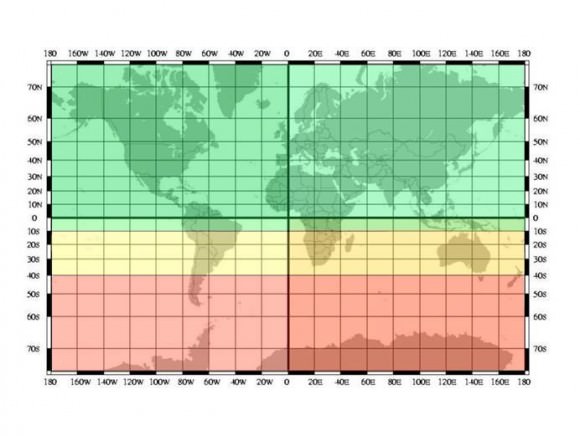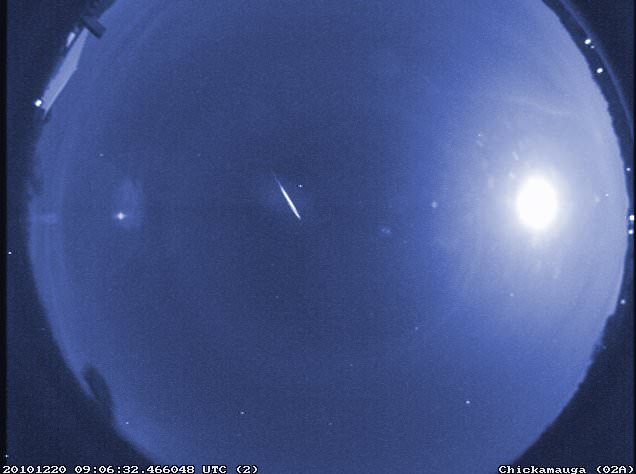[/caption]
If you are hoping to see some meteors from the Quadrantid meteor shower but are being foiled by cloudy weather or if it’s just too cold outside to get up off your couch, NASA has come to the rescue. The Marshall Space Flight Center has set up a live all-sky camera feed of the skies over Huntsville, Alabama in the US. You can find the Ustream page with the feed here. Reports from Marshall say the weather looks very clear for tonight (Jan. 3) in Huntsville. Tonight is really your best shot to see this meteor shower this year.
If you plan to be a little more actively involved in watching this shower, join in on Meteorwatch, where you can share the experience via Twitter.
Of course, you will have to wait until it is dark in Huntsville to watch the video feed; during the daytime, the feed will just show a dark gray box. The camera is light-activated and will turn on at dusk each evening.
This shower will peak in the early morning hours of Jan. 4. The Quadrantids have a maximum rate of about 100 per hour, varying between 60-200. The waxing gibbous Moon will set around 3 a.m. local time, leaving about two hours of excellent meteor observing before dawn.
Here’s a map of who should be able to see the Quadrantid meteors:

Red areas will see no Quads, yellow just a few, and green should see a decent shower if they are in dark sky conditions.
Marshall Space Flight Center suggests that to view tonight’s Quadrantids, you should have an area with dark skies well away from city or street lights. Dress warmly and go out just after Moonset around 3 a.m. local time. Lie flat on your back on a blanket, lawn chair, or sleeping bag and look up, taking in as much of the sky as possible. After about 30 minutes in the dark, your eyes will adapt and you will begin to see meteors. Be patient — the show will last until dawn, so you have plenty of time to catch a meteor.
For more info see the our preview article on the Quadrantid meteor shower, or Marshall Space Flight Center’s Quadrantid info page.


A few more resources for even more meteor fun:
1) You can also listen for meteor pings on Spaceweather radio http://spaceweatherradio.com/
2) You can report your meteor count to IMO at http://www.imo.net/visual/report and your fireball sightings to AMS at http://www.amsmeteors.org/fireball2/form2.php
3) You can also report your meteor and fireball sightings via NASA’s MeteorCounter smartphone app http://itunes.apple.com/us/app/meteor-counter/id466896415